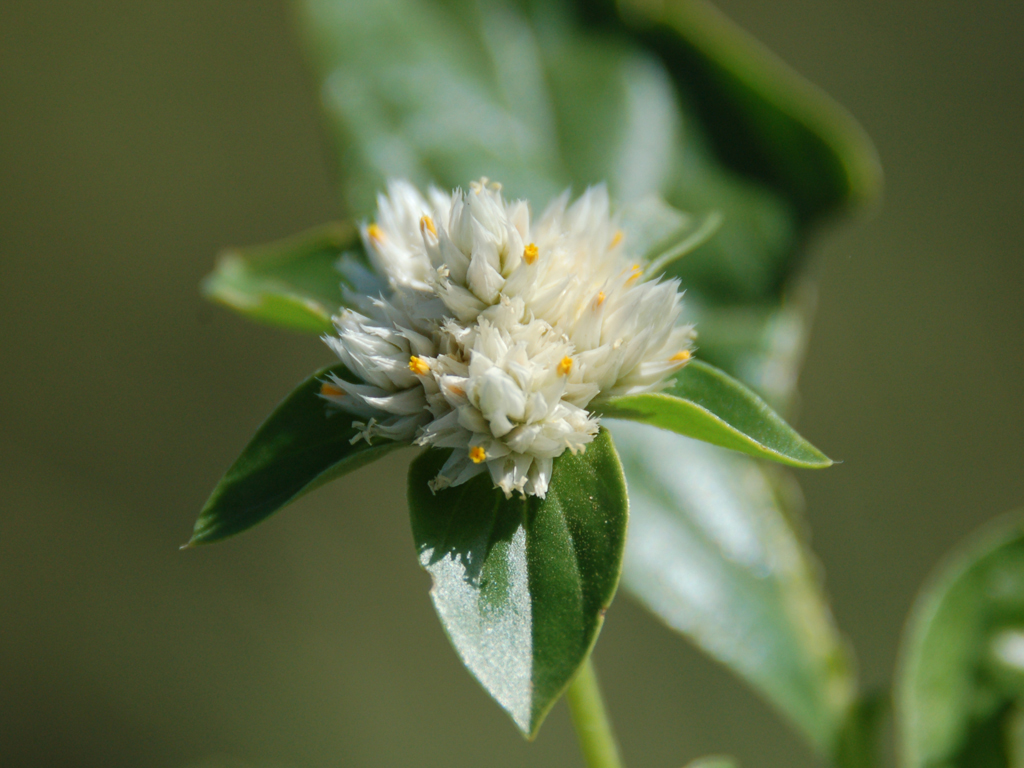Brazilian globe amaranth
(Gomphrena martiana)

Description
Gomphrena martiana, commonly known as Brazilian globe amaranth or Rio Grande globe amaranth, is a stunning flowering plant belonging to the family Amaranthaceae. This perennial species is native to the South American continent, primarily found in Brazil, Uruguay, and Argentina. Gomphrena martiana is highly regarded for its vibrant flowers, which come in various shades of purple, pink, and white. In this article, we will explore the key characteristics, growth requirements, and cultural significance of Gomphrena martiana. Taxonomy and Nomenclature Gomphrena martiana was first described by German botanist Kurt Sprengel in 1826. The genus name, Gomphrena, is derived from the Greek words "gomphos" (meaning "a nail") and "rena" (meaning "like"), referring to the nail-shaped fruit of certain species in this genus. The specific epithet, martiana, is in honor of the Brazilian botanist Maximino Martins, who contributed significantly to the study of Brazilian flora. Description Gomphrena martiana is a herbaceous perennial plant that typically grows to a height of 30 to 60 centimeters (12 to 24 inches). Its stems are erect, slender, and often branching. The leaves are simple, entire, and lanceolate, measuring about 2 to 7 centimeters (0.8 to 2.8 inches) in length. The foliage is a vibrant green, providing an attractive backdrop to the colorful flowers. One of the most striking features of Gomphrena martiana is its flowers. The inflorescence consists of compact, spherical clusters of tiny individual flowers, giving rise to the common name "globe amaranth." The individual flowers are tubular and have no petals, with the colorful bracts surrounding them serving as the main source of visual appeal. The bracts can be found in shades of purple, pink, and white, and they retain their vibrant color even after drying, making Gomphrena martiana popular for dried floral arrangements. Cultivation and Habitat Gomphrena martiana thrives in warm, subtropical climates and is primarily found in the grasslands, meadows, and open areas of Brazil, Uruguay, and Argentina. It prefers well-drained soil and can tolerate a wide range of soil types, from sandy to clayey. While it is a relatively drought-tolerant plant, regular watering during dry spells is beneficial for its growth and flowering. Propagation of Gomphrena martiana is typically done through seeds, which can be sown directly in the garden after the last frost date. The seeds are small and should be sown shallowly, as they require light for germination. It is important to maintain a consistent moisture level until the seeds sprout, which usually takes around 1 to 2 weeks. Once established, Gomphrena martiana requires minimal maintenance and is relatively pest and disease resistant. Cultural Significance Gomphrena martiana holds cultural significance in the regions where it is native. In Brazil, the plant is often used in traditional medicine to treat various ailments, including respiratory conditions and high blood pressure. Additionally, the vibrant flowers of Gomphrena martiana are incorporated into religious ceremonies, festivals, and decorations. Beyond its cultural significance, Gomphrena martiana has gained popularity in the horticultural world due to its attractive flowers and ease of cultivation. It is frequently used in flower beds, borders, and container gardens, where its compact form and long-lasting blooms make it an excellent choice. The dried flowers of Gomphrena martiana are often used in crafts, wreaths, and floral arrangements, adding a touch of color and texture to indoor decorations. Furthermore, Gomphrena martiana serves as a valuable plant for pollinators, particularly bees and butterflies, as they are attracted to its nectar-rich flowers. By including this plant in gardens and landscapes, individuals can contribute to supporting and conserving local pollinator populations. Gomphrena martiana is also recognized for its potential as an ornamental plant with medicinal properties. Several studies have investigated the chemical composition of Gomphrena martiana and identified the presence of bioactive compounds, including flavonoids, alkaloids, and saponins. These compounds have demonstrated antioxidant, antimicrobial, and anti-inflammatory properties in preliminary research. Further studies are underway to explore the full medicinal potential of this plant. Conclusion Gomphrena martiana is a captivating flowering plant that showcases its beauty through vibrant, globe-shaped clusters of bracts. Its adaptability, low maintenance requirements, and cultural significance make it an appealing choice for gardeners and horticulture enthusiasts. Whether used for its visual appeal, dried flowers, or potential medicinal properties, Gomphrena martiana continues to capture the attention and admiration of plant lovers around the world.
Taxonomic tree:







